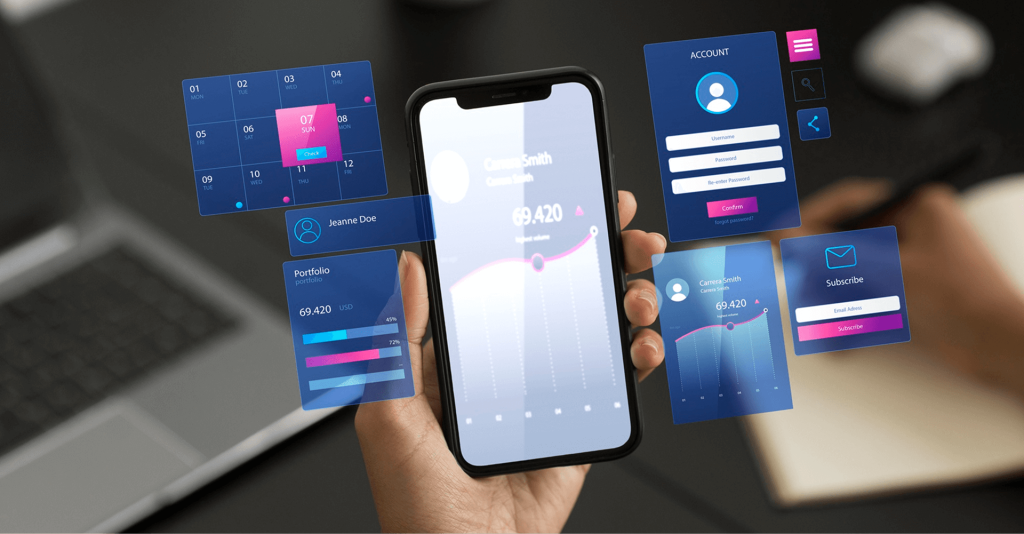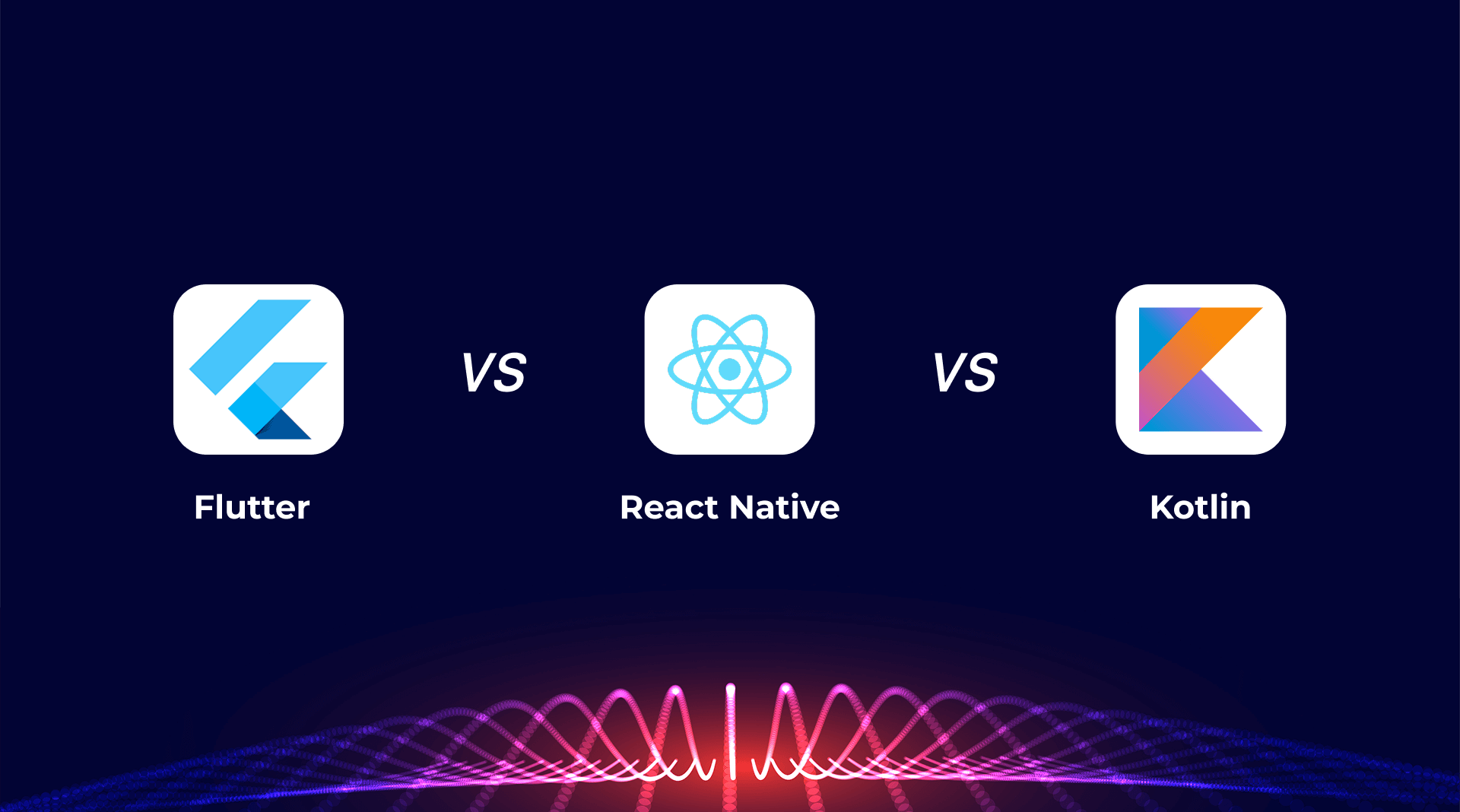If you’ve ever sat down to plan your next mobile app and asked, “which cross-platform framework should I pick?” — welcome to the struggle. The landscape is crowded, opinions are strong, and UI bugs hide in corners. As of 2025, the debate isn’t just which framework is good but which is the best cross-platform framework 2025 for your use case? This is what we will try to explore through this blog.
Brief introductions and philosophies
Flutter
Flutter is a cross-platform development framework known for its robust UI SDK and use of versatile Dart language. Unlike using bridges for connecting native UI elements as in the case of React Native, Flutter renders its own UI widgets using the Skia engine. Everything you see is drawn by Flutter. Because of that, you get very consistent behavior across devices, and full control over UI. In the “Flutter vs React Native” debate, Flutter often wins on UI fidelity.
React Native
React Native is another leading cross-platform framework that uses JavaScript or TypeScript and for UI development bridges the native UI components of the respective OS platforms. You render using platform widgets (UIKit / Android Views) behind the scenes. That gives you “native look,” but bridging often introduces complexity.
Kotlin Multiplatform (KMP)
KMP is a newer entrant. It doesn’t assume you share UI instead, you share business logic, data models, networking, and core algorithms. The UI remains native (Kotlin Android, Swift iOS). So you get native performance plus logic reuse. Thus, “Kotlin Multiplatform vs React Native” or “Kotlin Multiplatform vs Flutter” debates are really about trade-offs such as shared logic, and not necessarily UI.
Performance & UI fidelity
One of the fiercest battlegrounds in “Flutter vs React Native 2025” is performance under stress, animations, scrolling, transitions, media-heavy screens.
- Flutter performance vs React Native: In my tests and real projects, Flutter often wins when you push complex custom UI or transitions. Because Flutter has its own rendering engine, frame timing is more predictable. React Native can be smooth too, but bridging overhead sometimes bites you in list views or heavy animations.
- Kotlin Multiplatform vs React Native: Since UI is native in KMP, performance is comparable to native apps, no JS bridge in UI paths. React Native’s UI touches the bridging layer more, so with complex UI, KMP can feel safer.
- Kotlin Multiplatform vs Flutter: Flutter can still match or beat UI performance, because everything is in its rendering pipeline. But KMP wins when the UI demands leverage native views or OS features not easily replicated in Flutter.

Developer experience & productivity
A framework’s speed is more than performance, it’s iteration speed, tooling, error debugging, community support, and ease of extending.
- Flutter vs React Native:
Flutter’s hot reload is fast and reliable, and the “everything is a widget” principle ensures consistency. On the other hand, there is a moderate learning curve for Dart language used by Flutter. React Native in contrast relies on widely known and popular JavaScript or TypeScript language, The drawback for React Native is the inconsistent quality of different plugins in its ecosystem. - Kotlin Multiplatform vs React Native:
KMP gives you a cleaner architecture: shared logic in Kotlin, UI in native languages. The learning curve is steeper if your iOS team isn’t comfortable with Kotlin or if your Android team hasn’t done multiplatform layering. But once set up, adding new features is straightforward, and you avoid JS ↔ native bridging issues that RN faces. - Kotlin Multiplatform vs Flutter:
Flutter gives you a unified UI layer you can iterate rapidly. But if you have platform-specific UI demands, the boilerplate to diverge can grow. KMP keeps UI native, but you need separate UI code, so the dev experience is more fragmented. Still, many teams enjoy the clarity: UI code stays native, logic code is shared.
Ecosystem, plugins & native integration
No app is just UI, you will need camera, sensors, maps, payments, push messaging, background tasks, platform APIs.
- Flutter has a growing plugin ecosystem. Many common integrations exist (camera, maps, Bluetooth), with good documentation. For bleeding-edge or lesser-used APIs you sometimes write your own native plugin via platform channels.
- React Native boasts an expansive ecosystem. You often find a plugin for almost anything. The problem: maintenance quality varies. Some packages lag behind OS versions. Also, bridging updates can break plugins.
- Kotlin Multiplatform doesn’t try to reinvent UI or all modules. For platform-specific APIs, you rely on native libraries and write glue in expectations or actual or interface layers.
Code sharing, architectural patterns & logic reuse
How much can you truly share? That’s key.
- In Flutter, you can share nearly all of UI, navigation, business logic, animations, up to 90%. That makes Flutter very attractive when UI alignment across platforms is acceptable.
- In React Native, you can share business logic and many UI components, but OS-specific divergences often creep in. You may need platform-specific branches in UI code. So reuse is high, but fragmented.
- In Kotlin Multiplatform, UI is not shared, but logic is. So you often get 60–80% reuse (data layer, domain models, network, caching). You lose out on UI share, but gain in stability and native UI power.
Stability, maturity & long-term viability
You also need to keep the evolution of each framework and what lies ahead for each of them.
- Flutter: Very active, backed by Google, wide adoption. Frequent updates; some breaking changes, but overall stable trajectory.
- React Native: Mature, proven, many production apps. Community is large; but fragmentation and plugin decay are real risks as projects age.
- Kotlin Multiplatform: It is relatively new and young but it’s gaining traction, especially across enterprise projects. The large ecosystem of Kotlin and the and the powerful backing of JetBrains go in its f. For long-term projects, KMP is becoming a reliable choice, especially if UI requirements evolve over time.

Real-world experience working with these frameworks
Lets share a few stories developers often encounter with these frameworks.
- Animation stutter in React Native on older Androids
A client’s RN app looked perfect on high-end phones, but on midrange devices in the field, carousel transitions and scrolls lagged. Developers traced it to JS-main thread contention with rendering. The fix was moving parts of the UI into native modules or using Reanimated 2, it worked, but added complexity and divergence. - Plugin collapse after OS update
In a Flutter app, developers used a camera plugin. After an OS upgrade, the plugin lost behavior on one brand of phones. Because they had a fallback native wrapper, they patched quickly. The lesson is, even in Flutter, plugin health matters. You often build a fallback or maintain your version. - Kotlin Multiplatform logic bug surfaced in both iOS & Android
In a KMP project, developers shared validation and business rules. A logic bug in shared code manifested in both iOS and Android simultaneously, saving time diagnosing duplication between platforms. The shared layer proved its value there. - UI divergence pain in KMP
In one KMP project, the UI designs started diverging iOS vs Android aggressively over time. Because UI is written natively, syncing cross-platform UI changes took more effort than expected. So if your design team likes to diverge interfaces heavily, the UI cost in KMP can rise.
Guidelines: which to choose, when
Here’s a decision guide based upon real-world learning.
- If you want shared UI, fast prototyping, custom animations, and your team tolerates Dart, Flutter is a strong bet.
- If your team comes from a web/JS background and you need many off-the-shelf UI libraries, React Native is comfortable and powerful for many apps.
- If your app demands precise native performance, you care deeply about maintainability, and you can accept writing UI per platform, Kotlin Multiplatform is ideal.
- For apps with heavy UI custom work such as gaming UI, and transitions, Flutter or KMP works well. For more conventional UIs, RN works well.
- For backend-intensive or data-heavy logic involving sync, caching, and offline logic, KMP excels because all core logic is shared and tested once.
- If you foresee long-term evolution and you value control over dependencies, KMP gives more guard rails versus plugin decay.
In many cases today, a hybrid approach works best. For example, you can start UI in Flutter or React Native and gradually shift core business logic to a KMP or native-shared module as complexity grows. That gives you speed now and maintainability later.
Final verdict & takeaways
What is the best cross-platform framework in 2025? There is no universal winner. It’s contextual. For many scenarios, Flutter is leading thanks to UI consistency, performant rendering, and growing adoption. But KMP is closing the gap, especially for logic reuse and native UI fidelity. Last but not the least, you should pick a framework aligned to the look and feel of your app and the capabilities of your in-house team.
